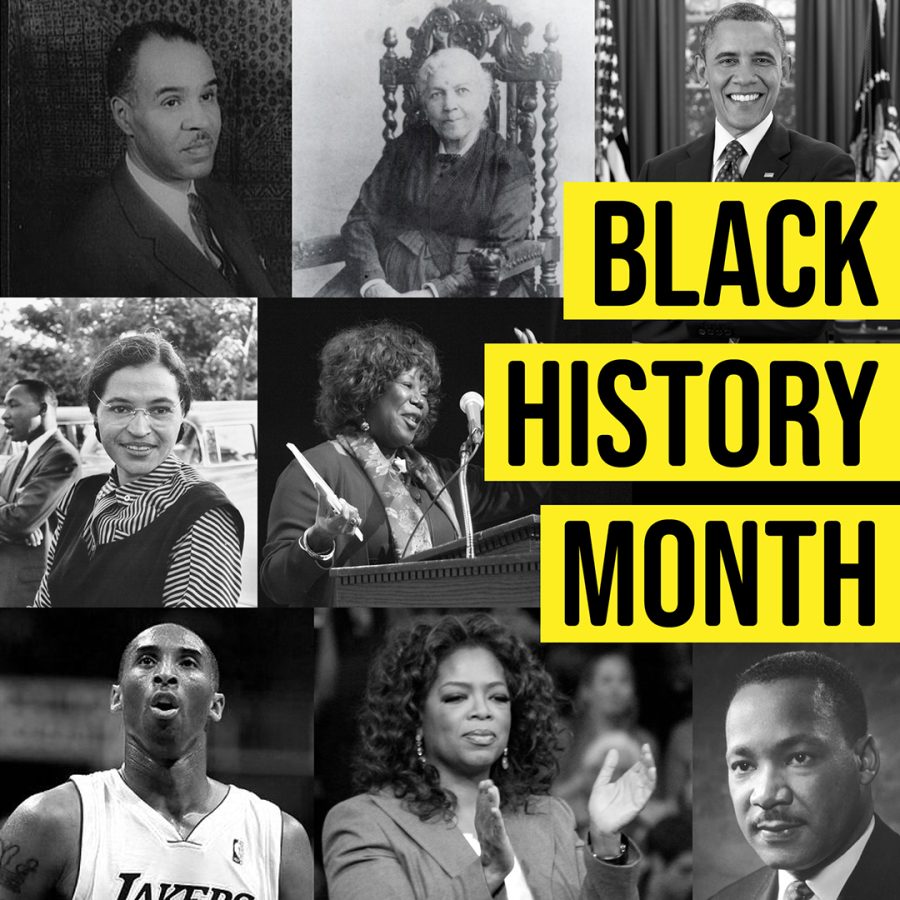Black History Month: The People That Made it Happen
February 15, 2022
Happy Black History Month, this article celebrates and recognizes some of our most well-known black figures. Black History Month acknowledges black people and how they have bettered our society.
Harriet Tubman
Harriet was known for being the conductor of the underground railroads. Harriet Tubman by Debra Michals explains she was born into slavery on Maryland’s Eastern shore in sa1822. Tubman had eight siblings. She always resisted slavery; one example was her defending an enslaved man who attempted to escape and yelled at her master. For that she was hit in the head with a two-pound weight, leaving her with a lifetime of severe headaches. For clarification, she did not create The Underground Railroad. It was established in the 1800s by abolitionists. In theory, she did benefit from the railroads when she and her two brothers escaped north. She helped many to escape. Because of her success, she led slaveowners to make a $4000 reward for finding her, but she was never caught. Her story continues to inspire others to change society.
Carter G. Woodson
Carter Woodson was born on December 19, 1875. He was born in New Canton, Virginia. His parents were slaves. He was very smart and at the top of his classes. He completed a four-year high school course in two years. He went to Berea College. After college, he started working for the government. He went back to college to get his master’s and bachelor’s degrees. He then received a doctorate from Harvard. He became the second African American to earn a Ph.D. from a prestigious institution. He noticed people overlooking black history and its importance. Because of that, he went on to write a book about important events in Black History. The book is called Journal of African American History. In 1926 he launched his own Black History week, the second week of February. He did that to coincide with Abraham Lincoln and Frederick Douglass’s birthdays. Eventually, it expanded to the whole month of February. Woodson, unfortunately, died of a heart attack at 74. His legacy still lives on as the U.S, Canada and the U.K celebrate Black History Month every February.
Ruby Bridges
Ruby was born in Tylertown, Mississippi, on September 8th, 1954. At the age of six, she was a part of the first African-American group to integrate into an all-white school. The federal court in New Orleans decided that two white public schools would accept black students through a test that they created. This test was purposely hard, so they wouldn’t have to admit Black students, but Ruby and a few other children had passed the test. The other girls were going to start at a different school than Ruby, but she would start at William Frantz Public School on November 14th, 1960. The first day, and every day after that, she had to face a crowd of furious white people waiting for her. She had to walk through this crowd while death threats and slurs screamed at her, disgusting signs were blocking her path, and objects were being thrown at her, all because she wanted a better education. One woman screamed, “I’m going to poison you. I’ll find a way.” Ruby had to be taught in a separate room and escorted to school by U.S. Marshals because of how much of a risk it was for her to attend school. Thirty-three years later, she went on to publish Through My Eyes. This book is about her first-hand experience of integration and what she went through. At the end of the day, Ruby is one of the reasons I’m able to attend Waltham High School today.

